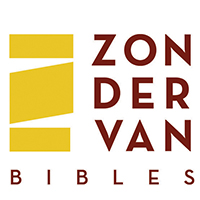While the Bible doesn’t say anything about observing the tradition of Advent, this tradition has existed within the global Christian church for centuries. It is nearly as old as the church itself, with the earliest mentions of the tradition happening as early as 380 AD at the Council of Saragossa. While that council was responding to a belief and practice that had migrated from traditional Christianity, the longstanding tradition of observing a time of waiting for the celebration of the incarnation has remained a profoundly meaningful and beloved tradition that has endured throughout the centuries.
Even though the word “Advent” is not found in the Bible, the message of the Advent season pervades both the Old and the New Testaments, as observant Jews wait for their Messiah over the centuries. The Thompson Chain-Reference Bible includes many topics that are useful for creating Advent-themed studies. In this article, we’ll look at using the TCR to build one or multiple studies during this Advent season.

What Is an Advent Celebration?
So what does the celebration of Advent involve? Today, many evangelical churches celebrate the season in their Advent services by reading Scripture passages that relate to the incarnation and lighting candles that celebrate the traditional aspects of this period of waiting. These readings are typically part of Sunday services, so they begin 4 weeks before the Sunday of Christmas week.
While it’s true that those in the congregation sometimes anxiously hold their breath as a family’s 5-year-old shakily holds the lighter to one of the five candles, the depth of meaning behind these profound readings and this quiet practice increases as the Advent season progresses.
Each of the five candles has different meanings, and while different traditions use different colors, one traditional Advent candle color and order is as follows:
- First Sunday candle: Purple. This is known as the “prophecy candle,” or the candle of HOPE.
- Second Sunday candle: Purple. This is known as the “Bethlehem candle,” or the candle of PEACE.
- Third Sunday candle: Pink. This is known as the “shepherd candle,” or the candle of JOY.
- Fourth Sunday candle: Purple. This is known as the “angel candle,” or the candle of LOVE.
- Christmas Eve candle: White. This is known as the “Christ candle,” and it symbolizes many things, including PURITY, LIGHT, RESTORATION, HOLINESS, and VICTORY.
A personal or small-group study could begin by looking at the study tools offered in the TCR’s Alphabetical Index under these capitalized words. Each will lead to a wide range of in-depth study possibilities.

Why Observe Advent?
The word “Advent” means “coming.” As the days grow shorter every year (at least in the Northern Hemisphere) and the darkness comes earlier, Christian families and churches look forward to the coming of the Light of the World—the celebration of the incarnation.
In a certain sense, it may be comforting for many reading this to understand that this tradition has been practiced for centuries longer than the current (sometimes anxiety-inducing) “traditions” tied to the holiday’s materialistic pursuits and social obligations. The “great cloud of witnesses” that the writer of Hebrews talks about in chapter 12 followed a somber but hopeful tradition of observing this time of waiting in community—solidifying the bonds that tied the early church together and fostering unity and mutual identity in Christ. That’s what Advent does for Christians today as well.
Of course, the tradition of waiting for the Messiah to arrive has been an integral part of the lives of God-followers for thousands of years. One of the main identifiers of the Jewish people since the time of Abraham (and even, arguably, from the time of Adam and Eve; see Genesis 3:15) has been the faith-defining hallmarks of patience and hopefulness as they wait for the promised Messiah to come.
Many of the Old Testament’s most beloved verses detail the hopeful waiting that was at the center of Jewish faith and practice. These are the same verses that Christians throughout the world still read and ponder today as they wait every year for the celebration of the incarnation. Continue your study in the TCR by turning to each of these passages in the Bible and looking at the marginal references. These will open you up to new study possibilities as you find and follow the topics that most interest you.
- The Lord your God will raise up for you a prophet like me from among you, from your fellow Israelites. You must listen to him. Deuteronomy 18:15
- Therefore the Lord himself will give you a sign: The virgin will conceive and give birth to a son, and will call him Immanuel. Isaiah 7:14
- For to us a child is born, to us a son is given, and the government will be on his shoulders. And he will be called Wonderful Counselor, Mighty God, Everlasting Father, Prince of Peace. Of the greatness of his government and peace there will be no end. He will reign on David’s throne and over his kingdom, establishing and upholding it with justice and righteousness from that time on and forever. The zeal of the Lord Almighty will accomplish this. Isaiah 9:6-7
- But your dead will live, Lord; their bodies will rise—let those who dwell in the dust wake up and shout for joy—your dew is like the dew of the morning; the earth will give birth to her dead. Isaiah 26:19
- “But you, Bethlehem Ephrathah, though you are small among the clans of Judah, out of you will come for me one who will be ruler over Israel, whose origins are from of old, from ancient times.” Micah 5:2
- Rejoice greatly, Daughter Zion! Shout, Daughter Jerusalem! See, your king comes to you, righteous and victorious, lowly and riding on a donkey, on a colt, the foal of a donkey. Zechariah 9:9
- “And I will pour out on the house of David and the inhabitants of Jerusalem a spirit of grace and supplication. They will look on me, the one they have pierced, and they will mourn for him as one mourns for an only child, and grieve bitterly for him as one grieves for a firstborn son.” Zechariah 12:10
- “I will send my messenger, who will prepare the way before me. Then suddenly the Lord you are seeking will come to his temple; the messenger of the covenant, whom you desire, will come,” says the Lord Almighty. Malachi 3:1
These and hundreds of other verses in the Old Testament point to the long-awaited Messiah—for whom many adherents of Judaism still wait. When Christians participate in Advent within their families and congregations, they join in that millennia-old tradition of waiting with expectant hope for the coming of the Savior of the world.

Using the TCR to Study Advent
The Thompson Chain-Reference Bible includes major topics with many related subtopics, allowing those interested in personal and communal study to start broadly and then drill down to get more specific. With this in mind, let’s look at the major topics for Advent and see which of the subtopics would work well for building a personal or small-group series on Advent.
The Need for a Savior and the Birth of Christ
Although it’s not listed as one of the four weekly topics, the purpose and birth of the Messiah should be at the heart of any Advent study series, with threads from this overarching topic woven through each of the four weeks of the season. The TCR contains many useful topical studies surrounding the need for a savior, and pointing to the fact that Jesus himself is the Savior that all humanity has been waiting for, including:
- Jesus the Messiah, 695
- Incarnation, 720
- Second Coming of Christ, 1344-1350
- Messianic Prophecies, 2890, 4300a
- Sin, 3338-3359
- Christ Our Savior, 3360-3368
- Christ King, 3421
- Virgin Birth, 4217
- Overview of Jesus’ Life, 4303a
Most of these topics include many Scripture references that can be used to create a richly nuanced, in-depth personal or communal study.
The Messianic Prophecy chart included in the end matter of the TCR (4300a: Messianic Prophecies and Their Fulfillment Arranged Chronologically) is especially interesting for Advent because it includes, in a single chart, references to prophecies and their fulfillment of both the birth of the Messiah and his Second Coming.
Hope
Turning to Hope in the Alphabetical Index of Topics, we see five subtopics:
- Eternal, 1692
- In God, 1693
- Messianic, 4186
- Of the Wicked, 1191
- Spiritual, 1691
All these topics work well for an Advent study series on Hope. They provide a wide range of directions the student or small-group leader can lead their listeners as they examine this topic during this time of hopeful anticipation. The topic Messianic Hope (4186) includes 12 verses with eight headings to highlight examples of passages to be used in teaching on this topic. It also suggests the topic Messianic Prophecies (2890), which will help develop critical talking points on both the birth of Christ and his second coming. Again, this is where the chart “4300a: Messianic Prophecies” is very instructive.
Peace
Turning to Peace in the Alphabetical Index of Topics, we see 12 subtopics:
- Spiritual, 3012
- Promised, 3013
- Given, 3014
- Duty of Seeking, 3015
- God of, 3016
- To be Cultivated, 3017
- Social Prescribed, 3774
- Social Foretold, 3775
- Periods of Social, 3776
- False, 2699
- Invoked, 2700
- No Peace, 3019
The topic of Peace covers several themes for personal application, for growth, and for strengthening one’s faith. The topic of Peace Promised (3013) covers 23 verses with six headings that point to related readings. Surrounding this topic are five other topics on Peace that cover numbers 3012-3017. Each of these can be profitably used to add to helpful talking points as the study is developed.
Joy
Turning to Joy in the Alphabetical Index of Topics, we see 12 subtopics:
- Christ’s, 1926
- Departed, 1812
- Earthly, 1940-1943
- Great, 1927
- Heavenly, 4175
- In Service, 3900
- In Sorrow, 1938
- In Trial, 1934
- Promised, 1928
- Restored, 1929
- Soul-Winners’, 4206
- Spiritual, 1930
Joy covers a wide range of themes. But exploring the joy that Christ had personally (1926) is especially helpful for a sermon on Advent. It covers eight verses and includes five headings to help in study development. Surrounding this are more topics on Joy (1927-1943) to greatly expand the topic with more examples and illustrations taken straight from the words of Scripture.
Love
Turning to Love in the Alphabetical Index of Topics, we see 26 subtopics. Here are a few that are great for Advent:
- Brotherly, 2200-2202
- Christ’s, 2203
- Directed, 2207
- Family, 1623-1625
- Father’s, 1625
- For Christ, 2205
- For Friends, 2202
- God’s, 2206
- Married, 1623
- Maternal, 1624
- Paternal, 1625
- Spiritual, 2209
- To Christ, 2204
- To God, 2208
- To People, 2200-2202
- Universal, 4124
The topic of Love provides a vast number of themes to cover for Advent, including the love of God and the love of family. These and all related topics on Love are also great to study for personal application. Christ’s Love (2203) is an especially helpful path of study for the season of Advent. It includes 25 verses, seven headings, four suggested topics, and nine surrounding topics to build out a well-rounded study.
Faith
This topic is not traditionally associated with the four weeks of Advent, but a study of Faith and all of its nuances can support and round out teaching on any one of the four traditional topics. The topic of Faith in the Alphabetical Index has 15 subtopics. A few that are great for Advent include:
- General reference, 1201
- Directed, 1202
- Justification by, 1203, 1985
- Blessings according to, 1204
- Example of Victorious, 1205
- Secures Salvation, 1206
- Great, ex. Of, 1207
- Promises to those who Exercise, 1208
- Honored, 1211
The topic of Faith also includes many themes that can strengthen the other topics, or perhaps be the subject of its own study. The General References to Faith (1201) includes 35 verses. Faith also covers topic numbers 1202-1218, and these can be expanded further with the topic Faithfulness (1228-1229).

Creating an Advent Study
Once you’ve identified the topics and Scriptures you want to use, you’re ready to build your Advent study. Be sure to include the significance of each one of the multiple topics of Advent in each study as you develop a well-rounded exploration of these topics. Interweave each topic liberally as you build a solid study, and support the Scripture passages you cite with illustrations from other parts of Scripture, word studies, and parallel passages.
Personal Preparation for the Season of Christmas
Participating in the Advent season’s beautiful traditions prepares Christians for the season of Christmas. How many beleaguered 21st-century Christians long for what the prophet Isaiah offered when he said,
But those who hope in the Lord will renew their strength. They will soar on wings like eagles; they will run and not grow weary, they will walk and not be faint. Isaiah 40:31
As we approach the holiday season every year, those of us who observe the Sundays of Advent find an opportunity to calm our hearts and minds and refocus on the true reason behind the season of Christmas: to celebrate the coming of Jesus into the world. This coming changes everything in the lives of believers, allowing hope to permeate our lives and our hearts, and hopefully become a part of our practice in the weeks leading up to the holiday—and beyond.
Hearing the Scriptures repeated before the lighting of each candle brings those who have grown up with the tradition back to their roots. The communal experience of Advent allows individuals to be reminded of their core identity as those whom God loved so much that he sent his only Son into the world to save them (John 3:16). When that profound reminder of God’s intense and eternal love for us is reawakened in our minds, hearts, and imaginations, the season of Christmas takes on a much greater depth of meaning.
It also allows those who participate in it to better understand themselves in the context of the greater Christian church around the world. The centuries-old celebration of Advent connects individuals and congregations in myriad Christian traditions, centering billions of minds and hearts on the one thing that binds us all together: our identity as those who are loved by God and saved through faith in the sacrifice and resurrection of his Son.
As you use your Thompson Chain-Reference Bible to explore the different facets of this season of Advent, we encourage you to invite others into the celebration of the gathering light that finds its culmination on Christmas Day.
The Thompson Chain-Reference Bible is published by HarperCollins Christian Publishing, Inc., the parent company of Bible Gateway.

